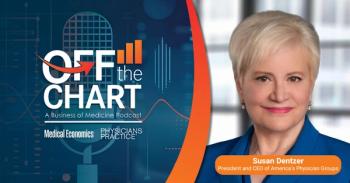
Study Says Medicaid Expansion Won't Reduce ER Use
Physicians should still focus on educating new patients, preparing for influx, experts suggest.
Just when physicians feared they'd have dozens of newly eligible Medicaid patients banging down their doors, a
Or, as the CBS Evening News put it, "a new report out today calls into question one of the main goals of the ACA: to get people to stop using the ED as their primary-care doctor by making more of them eligible for Medicaid.”
The study, based on 25,000 Oregon patients in the Portland area who entered a Medicaid lottery, found that people enrolled recently in Medicaid went to the emergency room 40 percent more frequently than others. And when they did, they had conditions that could be treated less expensively in a doctor's office or an urgent-care clinic, the Huffington Post noted. Patients with Medicaid made, on average, 1.43 ER visits, compared with 1.02 for those who lost the lottery, an increase of 40 percent.
But does this mean physicians shouldn't worry about getting an overwhelming surge of new Medicaid patients? Or, should doctors still expect an influx?
Family physician Reid Blackwelder, president of the American Academy of Family Physicians (AAFP), said doctors should still expect to see a gradual increase in patients over time. However, the findings highlight the need to educate people about the best way to use healthcare services.
"The findings indicate people who have not had access to the healthcare system may not understand that the best way to get care is through community-based primary-care settings," Blackwelder told Physicians Practice. "If - due to lack of insurance in the past - the only access to healthcare was through the emergency department, patients likely will continue to go to ERs until they understand having an ongoing relationship with a primary-care physician will save time and money."
Meanwhile, James Doulgeris, a former healthcare executive and contributor to Practice Notes, Physicians Practice's blogs, says physicians shouldn't necessarily worry about a surge in new patients until there are policy changes such as introducing meaningful copays and limits for non-emergent visits on a federal level.
"Deeply entrenched behavior, such as using emergency rooms as primary care for everything from minor complaints to chronic disease flare-ups, cannot be modified without either positive or negative reinforcement," says Doulgeris. "This behavior is also the pathway to increasing complexity and severity in episodic and chronic disease because only immediate, presented symptoms are treated, and the disease not managed, exacerbating the overall cost to Medicaid."
Behavioral change on the policy and legislative level must be changed as well, adds Doulgeris.
"Using the emergency room, which is always open and welcoming, versus finding a primary-care facility that takes Medicaid and waiting weeks for an appointment and hours for a visit is not the behavior of anyone stupid or simple - it is common sense if the cost is the same. Treating Medicaid recipients like children needing a governmental nanny demeans and damages the recipients and wastes billions of taxpayer dollars."
But whether you're experiencing a gradual influx of new patients thanks to the Affordable Care Act – through not just the Medicaid expansion, but also the healthcare exchange rollout – there are probably a few things you can do to prepare.
Echoing the sentiments of physicians and healthcare policy experts who spoke to Physicians Practice
"If you don't have midlevel providers, consider bringing a nurse practitioner or a physician assistant to your group," said Taylor. "Basic stuff can be [handled] those individuals."
Taylor also suggests extending your practice's hours to meet demand, or piloting e-visit technology that will allow patients to communicate with physicians - and possibly avoid unnecessary visits.
Blackwelder said AAFP data has shown that many medical groups have hired new physicians and NPPs in response to the legislation.
"In addition, 74 percent of our members have same-day appointments now, 40 percent have extended office hours, and 30 percent have weekend appointments open, and the number who are undertaking these activities appears to be growing in response to expected changed in demand," said Blackwelder. "Certainly using team-based care increases access, because this approach ensures that patients get the right care from the right professional at the right time. The physician can be seeing patients who have multiple health issues while nonphysician providers can be seeing patients who have straightforward, time-limited problems or whose stable chronic conditions require monitoring."
Newsletter
Optimize your practice with the Physicians Practice newsletter, offering management pearls, leadership tips, and business strategies tailored for practice administrators and physicians of any specialty.








